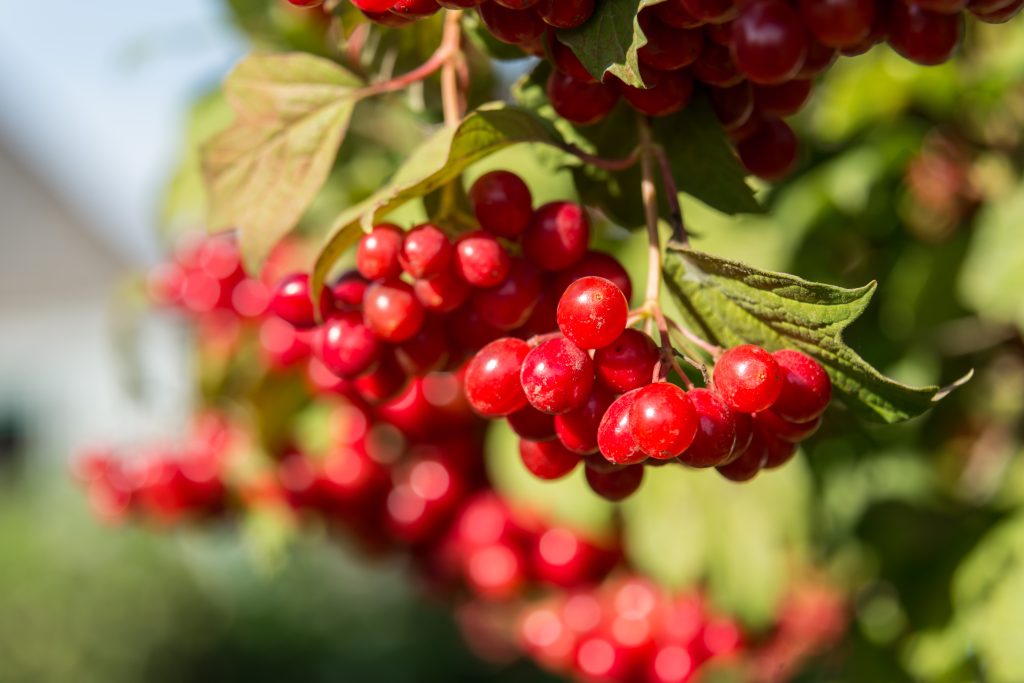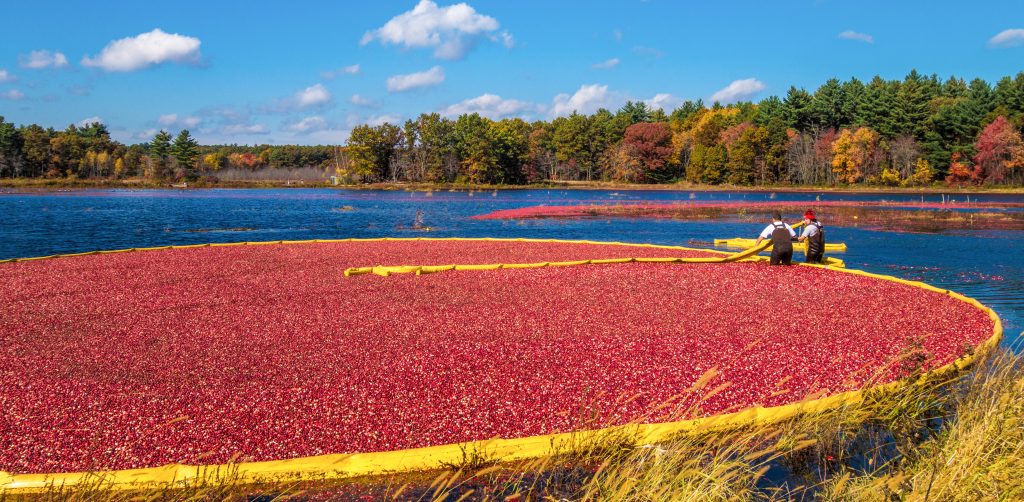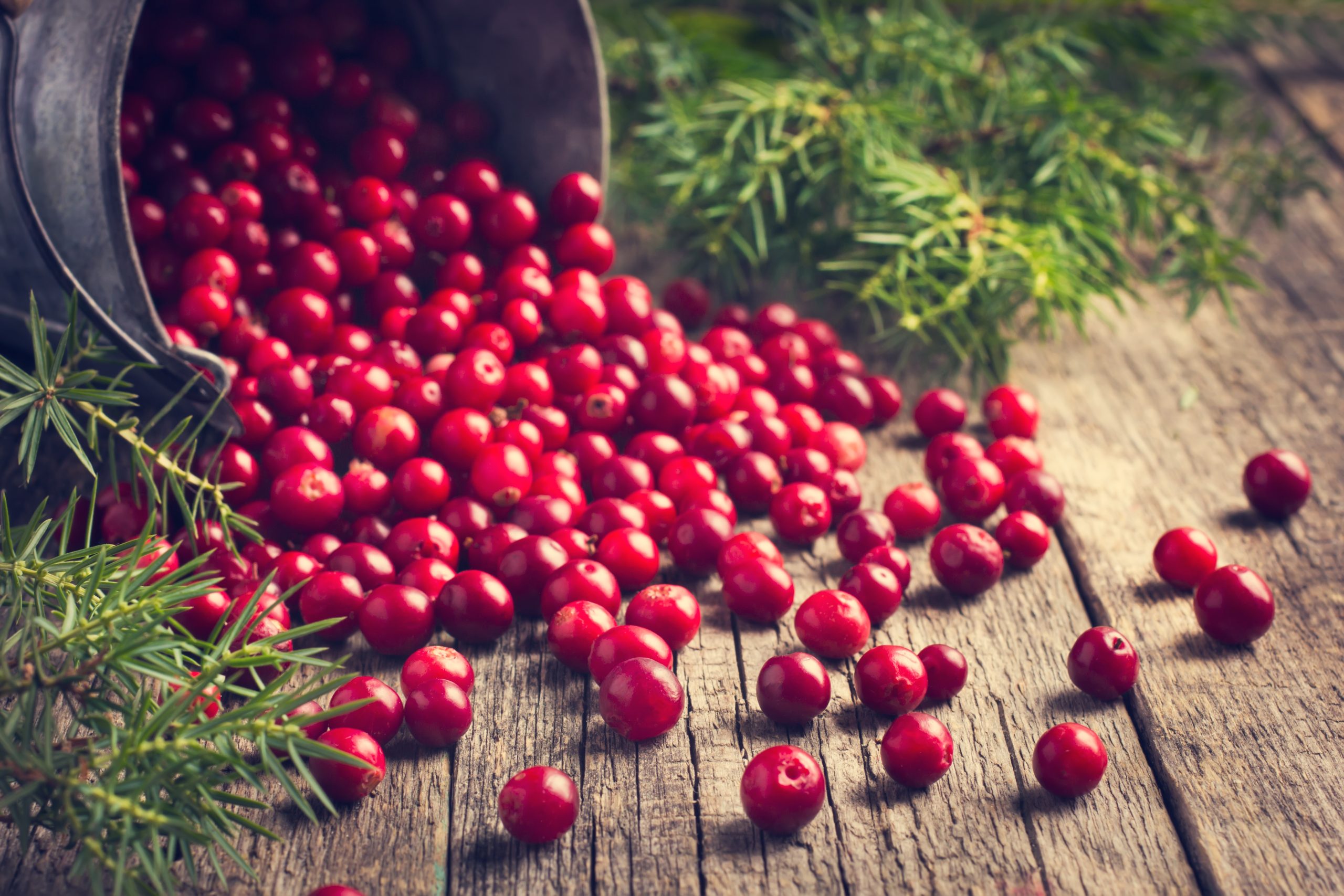Cranberries are a type of fruit native to North America and are widely known for their tart taste and vibrant red color. These berries are packed with antioxidants and nutrients, making them a popular ingredient in many dishes and a highly sought-after health food.
Table of Contents
What is a Cranberry?
Cranberry is a fruit native to North America and belongs to the Heather family of fruit known as Ericaceae, which also consists of blueberries, bilberries, and huckleberries. The scientific name for cranberry is Vaccinium macrocarpon.
Cranberries are also known by other names such as American cranberry, large cranberry, and bearberry. They are grown in acidic, peat-like soil and typically in cooler climates like the northern United States, Canada, and Europe.
The cranberry is a small, round fruit with a diameter of approximately 1 cm (0.4 in). It has a glossy, scarlet red exterior and a tart, sour flavor that can be slightly astringent. The cranberry interior is filled with tiny, edible, soft seeds.
One of the unique aspects of cranberry is its harvesting method. Cranberries are grown on low-lying vines in bogs flooded with water during harvest season. This causes the ripe berries to float to the surface, where they can be easily harvested.

The History of Cranberries
The cranberry has become a popular year-round favorite due to its tangy taste, but did you know it also has an extensive history?
Before the Europeans arrived in America, indigenous people were already familiar with cranberry. Native Americans not only used it as a source of food but also as medicine and a dye for clothing. When the Pilgrims arrived, they noticed the cranberry’s pink blossom resembled the head of a crane and named it the “crane berry.” Eventually, the name was shortened to “cranberry.”
Cranberry farming began in New Jersey in 1835 near Burrs’ Mills in Burlington County. Harvesting cranberries was laborious, requiring many workers to gather berries by hand or scoop. Nowadays, wet-picking is the norm.
In 1917, a cranberry farmer from New Jersey named Elizabeth Lee began selling canned cranberry sauce under the name “Bog Sweet.” Later, she joined forces with Marcus Urann of Massachusetts to form the company known as Ocean Spray, the largest cranberry growers organization in the United States.
Each autumn, the Cranberry Festival is held in Chatsworth, New Jersey, where many contests featuring cranberries take place. There’s also an annual Cranberry festival named Cranfest happening in Warrens, Wisconsin.
Wisconsin is also the largest producer of cranberries, followed by Massachusetts and Oregon.
What Does a Cranberry Taste Like?
Raw cranberries are known for their tart and sour taste, which can be intense and acidic. They have a slightly bitter aftertaste and a firm texture that can be tough to chew. Some people also describe the taste of raw cranberries as slightly astringent or puckering.
When cooked, cranberries are typically sweetened with sugar or other sweeteners to balance out their tartness. As a result, they take on a sweeter flavor profile and become less sour. They also become softer and juicier when cooked, making them ideal for sauces, jams, and other dishes.
Cooked cranberries can have a tangy, fruity flavor that pairs well with various foods, from meat to desserts.
How to Tell When Cranberries Ripe
To determine if a cranberry is ripe, you can look for the following visual characteristics:
| Color | Ripe cranberries are usually a deep red color. However, depending on the variety, they may be brighter red or even pinkish. |
| Firmness | Ripe cranberries should feel firm and plump to the touch. |
| Size | Cranberries generally reach their maximum size when they are ripe. They should be round and about the size of a pea. |
Note: When shopping for cranberries, look for fruit that is firm, plump, and has a deep red color. Avoid cranberries that are mushy, shriveled, or discolored. It’s also a good idea to check the packaging date to ensure that the cranberries are fresh.
What are Cranberry Bogs?

Cranberry bogs are wetland areas that are specifically cultivated to grow cranberry plants.
The process of cranberry harvest is unique to the bogs in which the plants are grown. Typically, cranberries are harvested in the fall when the berries are fully mature and have turned a deep red color. There are two primary methods for harvesting cranberries: wet harvesting and dry harvesting.
Wet harvesting involves flooding the cranberry bog with water and using special equipment to agitate the water and dislodge the berries from the plants. The berries float to the surface, making them easier to collect. Once the berries have been gathered, they are taken to a processing facility, where they are cleaned, sorted, and packaged.
On the other hand, dry harvesting involves using a mechanical picker to harvest the berries directly from the plant. The picker gently combs through the vines, removing the berries without damaging the plant. The berries are then sorted and packaged.
After the harvest, the bogs are typically flooded again to protect the cranberry plants during winter. The water provides insulation against freezing temperatures and helps prevent plant damage.
Is It Safe To Eat Raw Cranberries?
Yes, it is safe to eat raw cranberries. They are a nutrient-dense food and can be enjoyed in various ways. Here are some of the best raw applications for cranberries:
| By Themselves | Cranberries can be eaten as a healthy snack. They are low in calories and high in fiber, making them an excellent option for between-meal munchies. |
| Salads | Raw cranberries add a delicious tart flavor and crunch to salads. They pair well with leafy greens, nuts, and a vinaigrette dressing. |
| Smoothies | You can add them to smoothies for a tangy and refreshing flavor. They pair well with other fruits like strawberries, raspberries, blueberries, and bananas. |
| Salsa | Raw cranberries can make delicious and unique salsa. They pair well with diced tomatoes, onions, jalapenos, and lime juice. |
Cooking with Cranberries
Before cooking with cranberries, it’s essential to wash them thoroughly:
- Rinse the cranberries in a colander under running water.
- Pick through the berries and discard any that are discolored or soft.
- Give the cranberries a final rinse before using them in your recipe.
You can cook cranberries in various ways, including boiling, baking, and sautéing. They’re commonly used in sauces, chutneys, and baked goods. Cranberries are often found in North American and European cuisine.

Here are some specific dishes that use cranberries:
Cranberry Sauce: Cranberry sauce is the perfect addition to any holiday meal, but it’s also delicious enough to serve any time of year.
Cranberry Vodka: This recipe is excellent for those who like to make their own alcohol at home. It has a pleasant cranberry taste that’s not too sweet or tart—just right!
Braised Beef with Red Wine and Cranberry: This hearty dish full of juicy beef is perfect for those cold winter nights when you want something warm and comforting! The red wine gives it a rich flavor that pairs perfectly with the cranberries in this dish.
Chestnut, Bacon & Cranberry Stuffing: This stuffing is easy to make but tastes so good that people will ask for seconds! We recommend pairing this dish with a hearty red wine such as Malbec or Cabernet Sauvignon.
How to Store Cranberries
Fresh cranberries can be stored in the refrigerator for up to 4 weeks. To do this, remove any damaged or spoiled berries and transfer them to a plastic bag or airtight container.
You can also freeze cranberries for up to a year. We highly recommend doing this, as they can only be found during the fall and winter months.
Additionally, you can also dehydrate cranberries. Dried cranberries can last up to 6 months when stored in an airtight container at room temperature. To dehydrate cranberries, spread them on a baking sheet and dry them in an oven or dehydrator until they look shriveled and become dried fruits.
Nutritional Benefits of Cranberries
Cranberries are a type of berry that offer many health benefits. One of the top benefits is that they contain antioxidants, which help protect the body from damage caused by free radicals. However, these compounds are found only in their skin.
Drinking unsweetened 100% cranberry juice or consuming cranberry supplements can help prevent recurrent UTIs thanks to polyphenols like proanthocyanidins, flavonols, and quercetin. Regular consumption of cranberry extract may help reduce the risk factors for heart disease.
Cranberry products containing A-type pro-anthocyanidins may help suppress the growth of Helicobacter pylori bacteria, reducing the risk of stomach ulcers and cancer. The effects of cranberry on heart health work by improving cholesterol levels, lowering blood pressure, and reducing a harmful compound called homocysteine.
Cranberries are also a good source of ursolic acid, which has anti-inflammatory, antioxidant, and anti-cancer effects.
Side-Effects:
- Drinking cranberry juice can enhance warfarin’s anticoagulant (blood-thinner) properties.
- Consumption of cranberry products could also result in increased elimination of oxalate through urine.
Where to Purchase Cranberries
Cranberries are commonly found in the produce section of most grocery stores. Since they are harvested from September to November, look for them in the fall and winter months. Many farmers’ markets offer fresh cranberries during this period as well.
It’s harder to find them during any other time, so if you’re buying them in large quantities, freeze some of them to save for later use. Additionally, specialty food stores, such as Whole Foods and Trader Joe’s, often carry a wide selection of fresh and frozen cranberries, cranberry juice, and other products.

